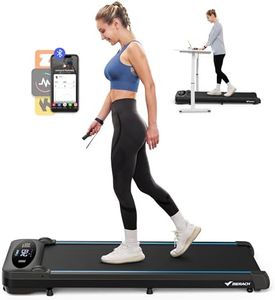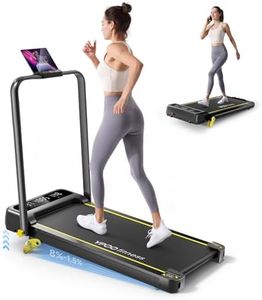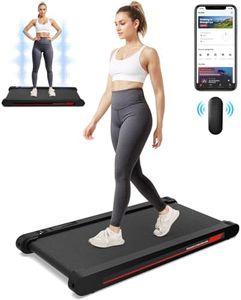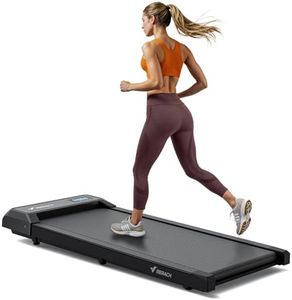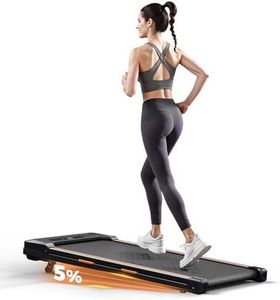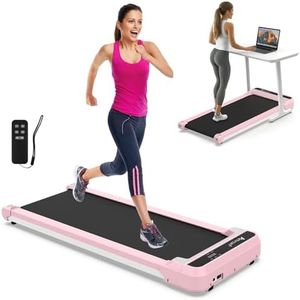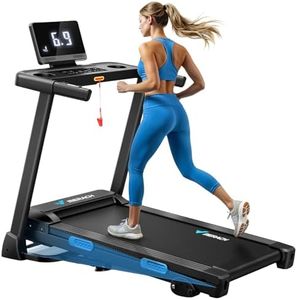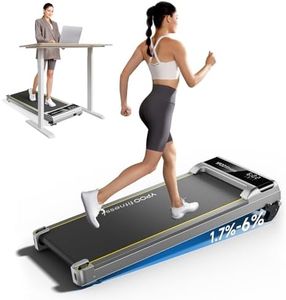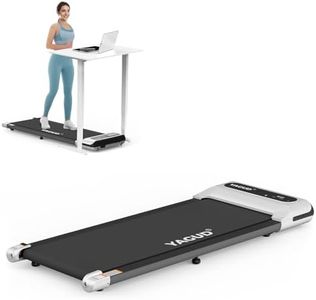We Use CookiesWe use cookies to enhance the security, performance,
functionality and for analytical and promotional activities. By continuing to browse this site you
are agreeing to our privacy policy
10 Best Walking Treadmill For Desk
From leading brands and best sellers available on the web.Buying Guide for the Best Walking Treadmill For Desk
Choosing a walking treadmill for your desk is about finding a model that fits your workspace, supports your lifestyle, and helps you stay active while working. Since you'll be using this treadmill during tasks like typing or video calls, looking for comfort, noise level, and usability is key. The best model is the one that makes it easy and pleasant to integrate movement into your daily work routine.Motor PowerMotor power indicates how strong the treadmill’s engine is, usually measured in horsepower (HP). This matters because a stronger motor can support longer walking sessions and heavier users without overheating or wearing out quickly. For desk walking (as opposed to running), a motor in the lower range—around 1.5 to 2.5 HP—is usually enough. If you plan to use the treadmill for multiple hours daily, or if you’re a heavier user, you’ll want a model on the higher end so it remains reliable over time.
Noise LevelNoise level refers to how much sound the treadmill produces when in use. This is important if you’re in a shared workspace, have lots of online meetings, or just prefer a quiet environment. Most models display their noise level in decibels, but you may need to rely on user feedback to judge. The quieter the treadmill, the less it will disturb you and others. Look for models specifically mentioned as ‘quiet’ or ‘low-noise’ if this matters to you.
Speed RangeSpeed range shows how fast or slow the treadmill can go, usually in miles per hour or kilometers per hour. Because desk treadmills are designed for walking, they often have a max speed of around 4 mph. For comfortable desk use, most people walk between 0.5 and 2 mph. If you only plan to stroll while you work, lower speeds are fine; but if you want the option to power walk during breaks, choose a model that can go a bit faster.
Treadmill Size and Deck LengthThe overall size and especially the deck length (the walking surface) affect how comfortable your stride will be. A longer deck offers more room to walk naturally, which is important if you’re tall or have a longer stride. However, a smaller treadmill fits better under smaller desks and is easier to store. If your workspace is limited, measure your available floor space carefully and pick a treadmill that fits comfortably.
Weight CapacityWeight capacity tells you the maximum weight the treadmill can support. This is important for safety and long-term durability. Most walking treadmills support between 200 to 300 pounds. Always pick a treadmill with a weight limit well above your weight, as this reduces strain on the motor and frame.
Portability and StoragePortability refers to how easy the treadmill is to move, often helped by built-in wheels, while storage relates to whether it can be stored flat or upright when not in use. If you need to share your workspace or store the treadmill between uses, look for lightweight models or those designed specifically for easy relocation and storage, as these will be more convenient for regular home office setups.
Control OptionsControl options determine how you start, stop, and adjust the speed of the treadmill. Some have remote controls, some have touch panels, and some even offer mobile app support. If you want a seamless work experience, opt for a treadmill with a remote or easily accessible control panel so adjustments don’t interrupt your workflow. Features like pause/resume buttons or speed presets can also make daily use handier.
